London Mithraeum
I’m going to make a big call here: the London Mithraeum, which straddles a line between public and private in the basement of a City office tower, is somehow the best interpreted archaeological site I think I’ve ever seen. And this despite the fact that the cult of Mithras hardly appears in contemporary written records and as such is known mostly through archaeological remains such as these, so there’s not much to go on in putting together an audiovisual component. From the resources on hand to the flow of the experience, I not only enjoyed it but felt more connected to the site than I have done to many archaeological ruins, much as I love them.
A bit of history first of all. To go back to the beginning, in the Roman settlement of Londinium, there once were temples, markets, houses, workshops and rivers, Walbrook St on which the contemporary entrance to the Mithraeum finds itself being named for one such. The people of Londinium had a number of options when it came to worshiping, the Roman Empire being a polytheistic sort of place, and if they ticked the right boxes they could worship at the Mithraeum. The boxes they needed to tick were A) being male and B) being an initiate of the cult of Mithras. Before our trip to the Mithraeum I confidently misinformed my Significant Other based on some half remembered Classics lessons from my youth: yes there is some sort of connection to Eastern religion but no it wasn’t a direct import from exotic lands, and yes there was something sacrificial going on, but no it doesn’t seem to have been quite as gory as I remember.
Let us now fast forward many centuries, during which the level of the streets has risen by several metres, leaving the erstwhile Mithraeum well and truly underground. Much of London was bombed to smithereens during World War II, and there was a lot of building activity subsequently to replace what was gone and to modernise some bits of it. In the early 1950s an office building named Bucklersbury House was going up on one of these bomb sites to house financial services company Legal & General, when an archaeological site was uncovered. It may be assumed that Legal & General said something along the lines of “Oh dear…”. On the very last day of the excavations a head of Mithras was uncovered, showing it beyond doubt to have been a Mithraeum (archaeologists had thought they might be dealing with an early Christian church, while the later coopting of the space as a temple to Bacchus meant room for confusion). So, a Mithraeum. Legal & General came to an arrangement whereby they could keep building their modernist tower, but would take into account the immense public interest in the Mithraeum by relocating it 100 metres or so away (and doing a dodgy reconstruction, but that probably wasn’t part of the deal). So from 1962 the Mithraeum was publicly visible on top of a car park or similar, where it remained until it was briefly relocated for a planned development, before the site was acquired by Bloomberg.
So what did Bloomberg do with it? Well, they built themselves some new European headquarters, but managed at the same time to relocate the Mithraeum back to its original site, several metres underground. (Originality, as a side point, is not discussed very clearly in the materials onsite – a Wikipedia entry claims that “A large majority of the stones and bricks are original”). Bloomberg have worked closely with Museum of London Archaeology (MOLA) to display a number of artefacts excavated from in and around the site, as well as to interpret the Mithraeum itself. The visitor experience goes something like this: book a free ticket online, turn up at allotted time and start in a contemporary art space at ground level. Depending on availability, a visitor host will hand you a tablet on which you can learn more about the artefacts on display, including shoes, pottery, jewellery, tools of various trades and the like (the area was originally very marshy so there is a surprising amount of organic material). Then you go down the stairs to what is essentially a waiting room before the big event, although quite a nice waiting room with models of key finds from the site, and Joanna Lumley narrating some key points relating to the cult of Mithras. Then, every 20 minutes, you go one floor down again to the temple, where there is an audiovisual ‘experience’: chanting in Latin, voices conversing, the sounds of a shared meal, all with atmospheric use of light to highlight different aspects of the temple in turn. Then back above ground and out again onto the City streets.
Sounds ok, you might be thinking, but why did you like it so much? To me what the London Mithraeum seems to represent is a fortuitous coming together of an innovative archaeological team, and loads of corporate money from a company who see themselves as ‘stewards’ of this history. Who is to say where the ideas came from, but I can’t think of anywhere else I’ve seen that was as good at evoking a sense of the building in use, and making it relatable. While I didn’t know what the Latin meant (and it was presumably a nice bit of historic guesswork that we don’t have written records of their rites), it sounded a bit like a church service. Lights in the ceiling and hanging capitals filled in the missing walls and columns to bring the space back together again in a way that I thought was really genius. Suddenly an obscure cult that has something to do with bulls and happened thousands of years ago seems like any one of a number of modern spaces in London, and what once seemed like a chasm between myself as visitor and the initiates of the Mithraeum now seems no bigger than a stream, or the Walbrook, if you will.
The next question for me was: is this a genuine bit of corporate social responsibility, or something a bit more cynical? And how much does it matter? CSR is an increasingly important part of how (some) companies engage with their customers and the wider public: a lot of it happens through things like sustainability, making employee time available for good causes, community education and so on and so forth. Developing and maintaining an archaeological museum experience which is free and open to the public certainly seems to fit this bill. If this is something which allows them to tick a certain box, while also allowing the archaeologists of MOLA and various other consultants to flex their creative muscles and allowing Londoners and tourists to learn about a fairly obscure part of the city’s history, does it matter to what degree Bloomberg are genuinely invested in the Mithraeum as a public service? And who knows, maybe they are. The Significant Other’s suspicion that big time capitalists like to have such anchors of history and power on site speaks mostly to his cynicism (I think).
Sorry to anyone who comes to visit me in London in the near future: I am going to bore on about the Mithraeum until you go to see it too. Whether you are a history buff, collector of obscure tourist attractions, interested in the interpretation of archaeological sites, or even a lover of corporate art commissions, the Mithraeum is for you. I’ve put some pictures below to whet your appetite, enjoy!

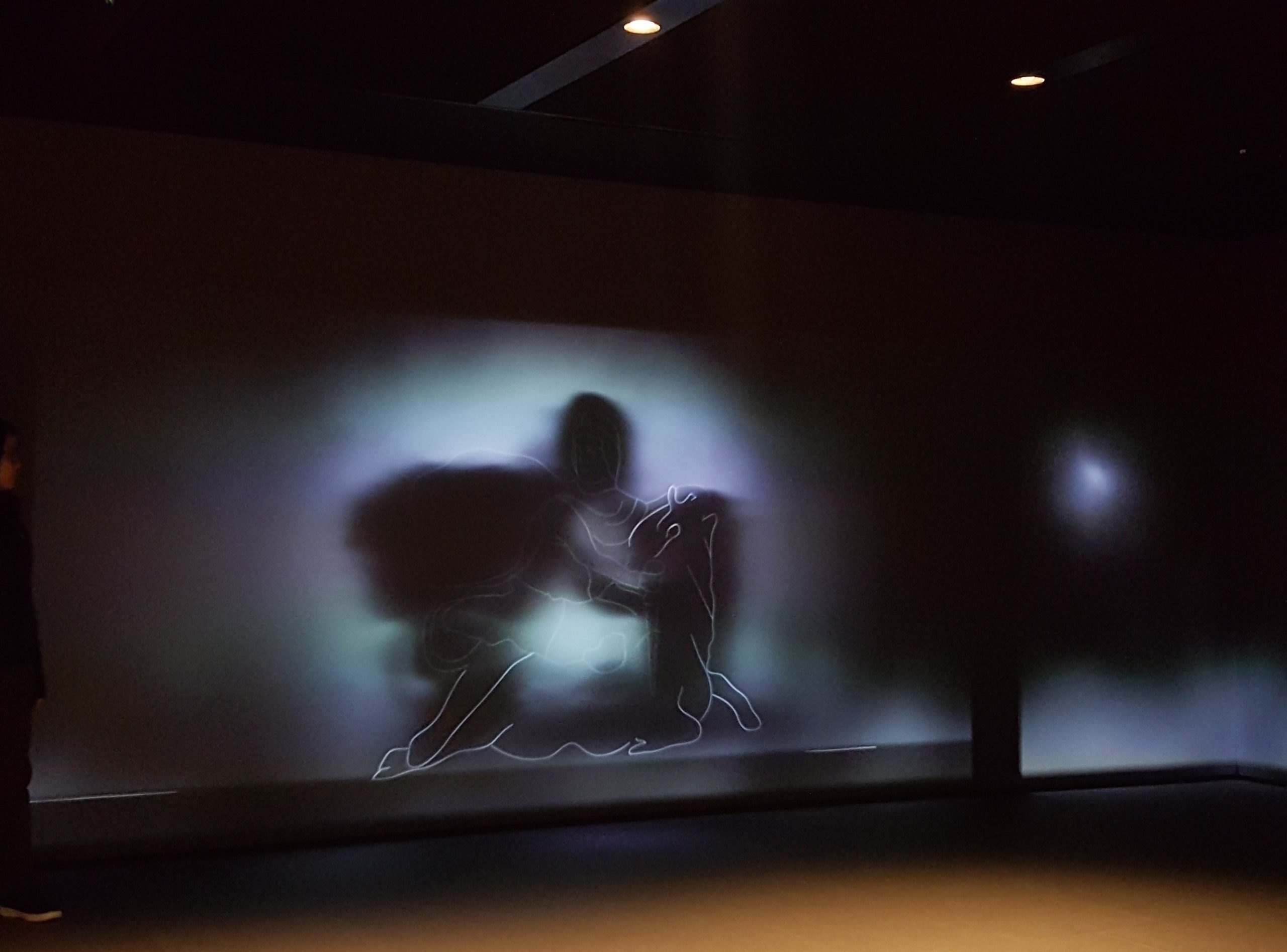
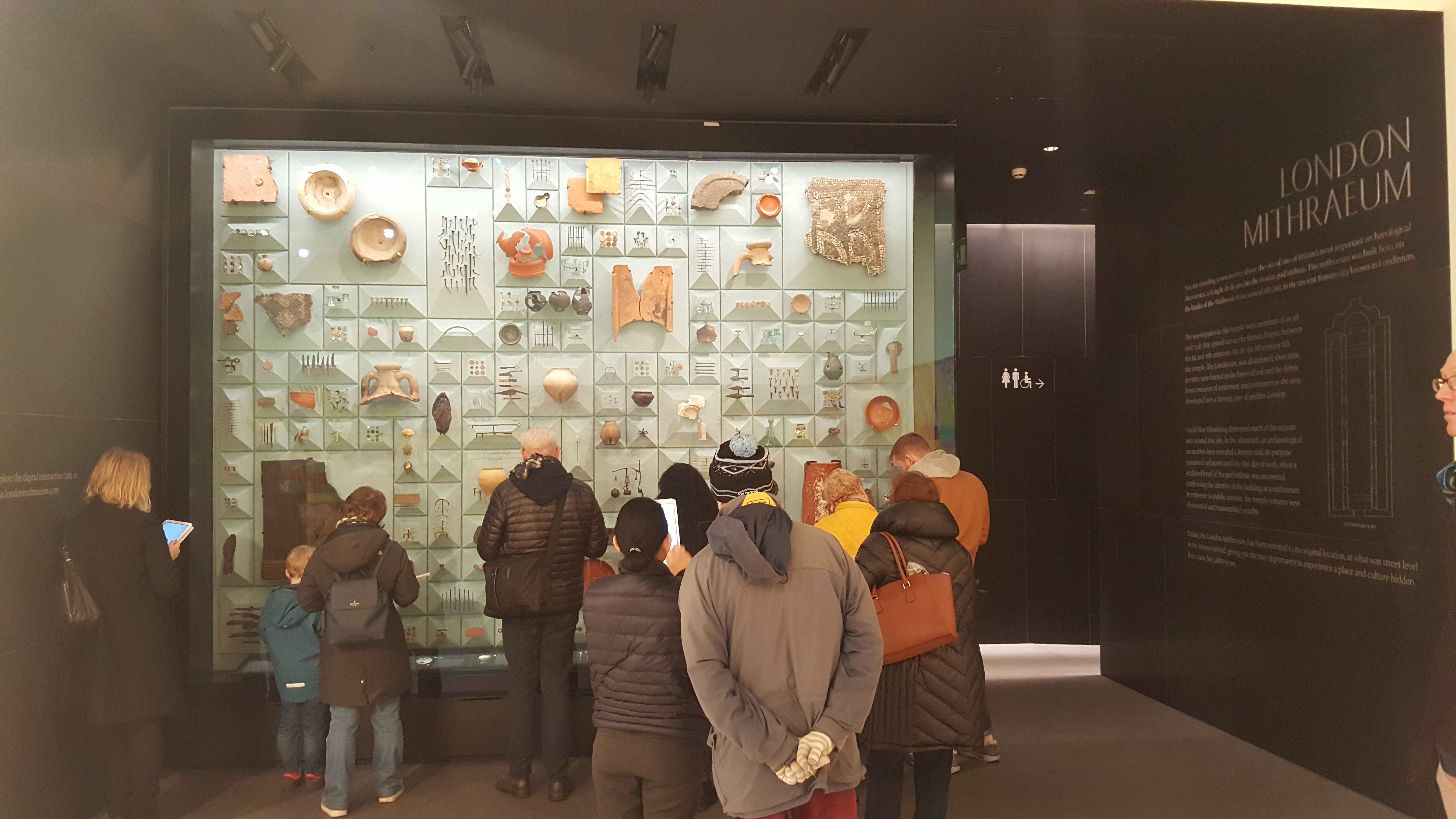
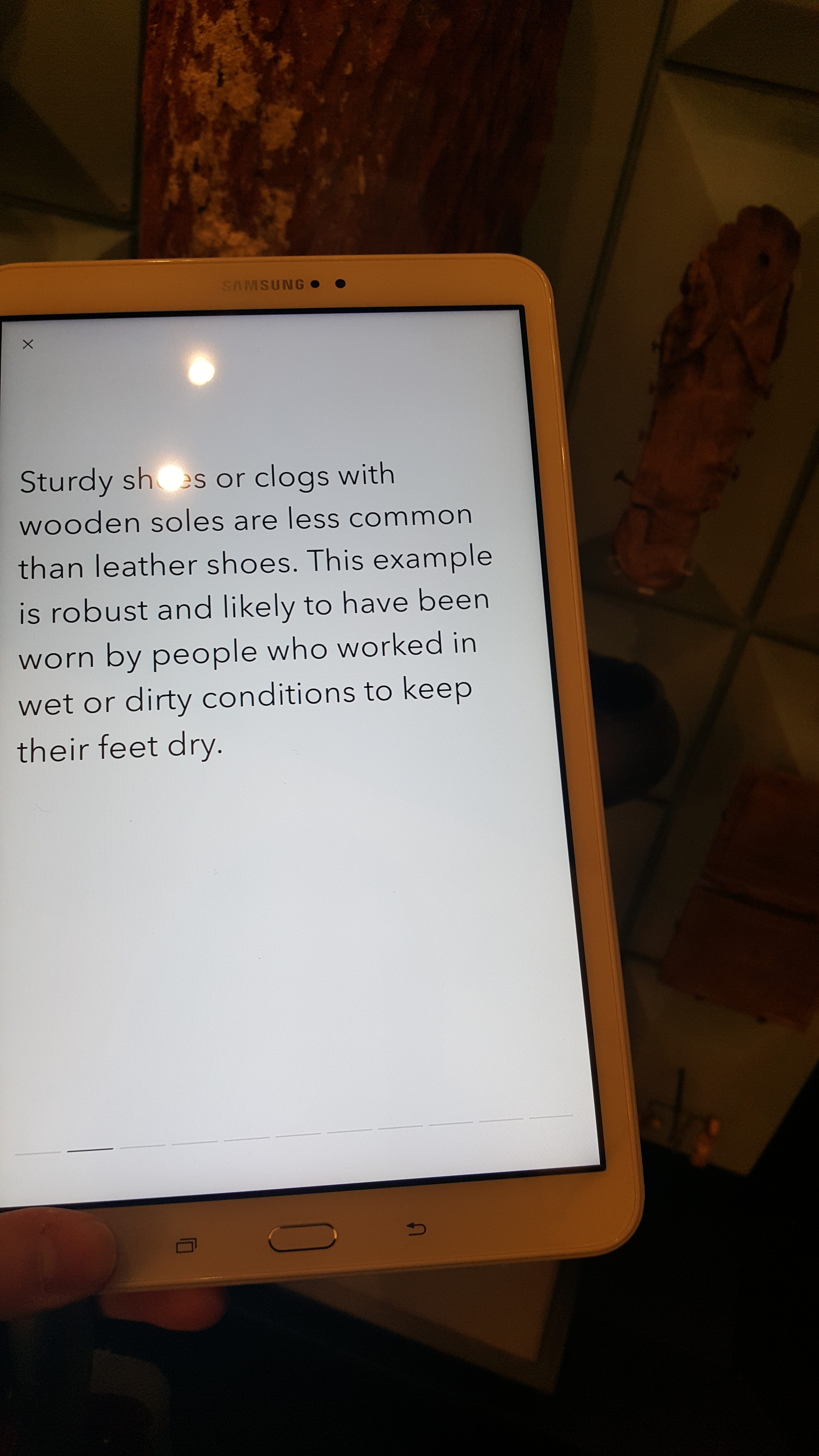
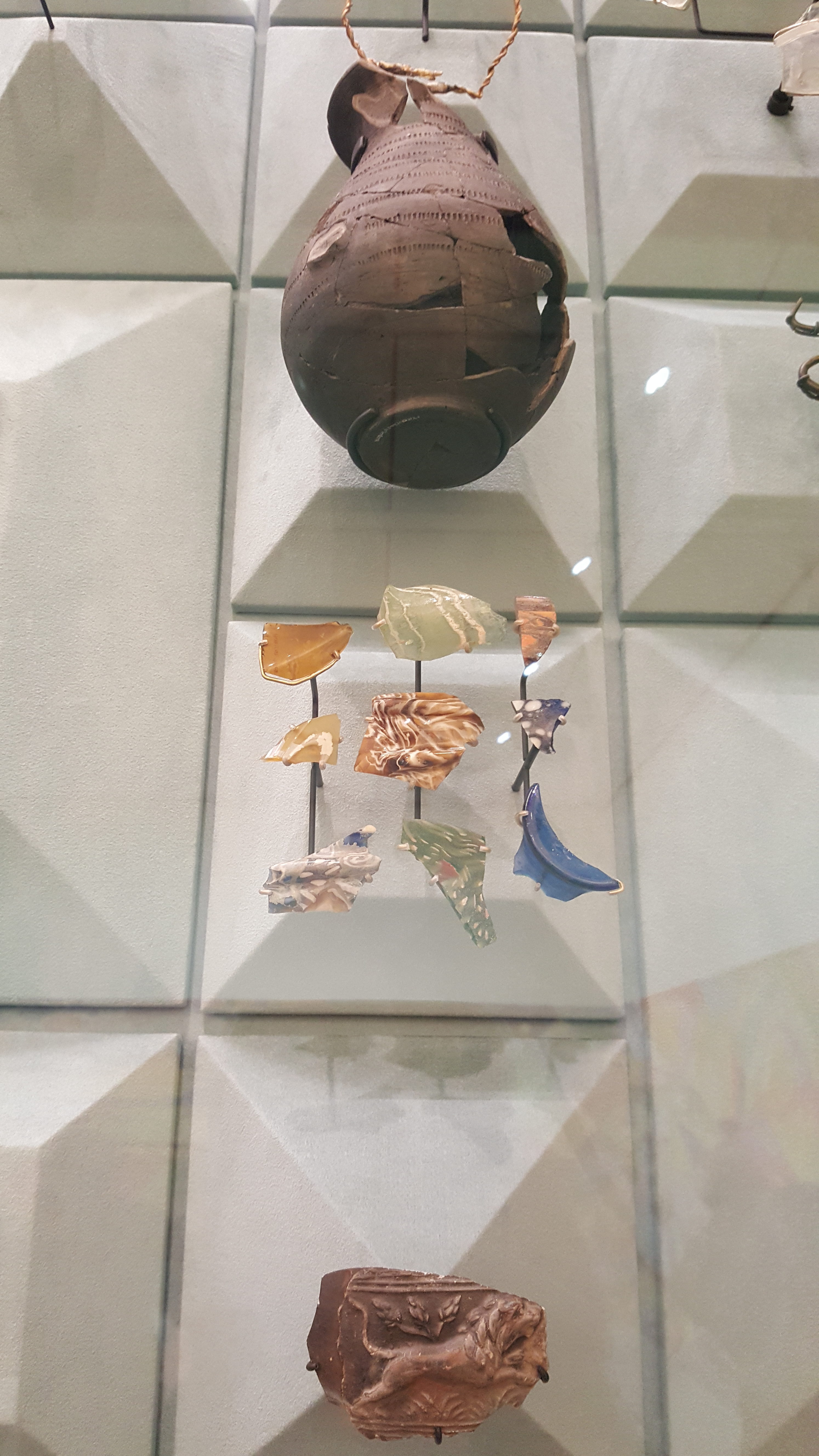
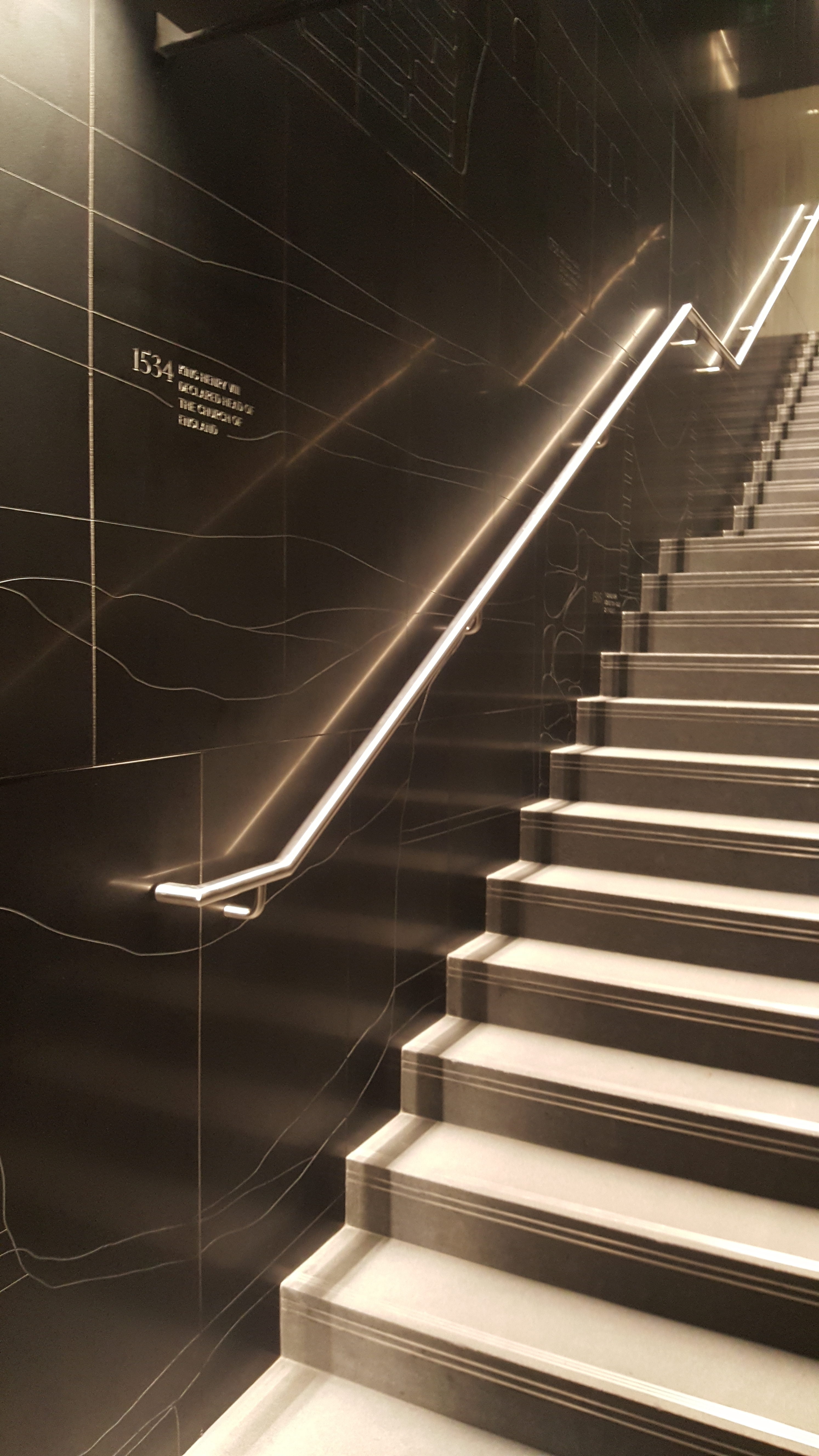
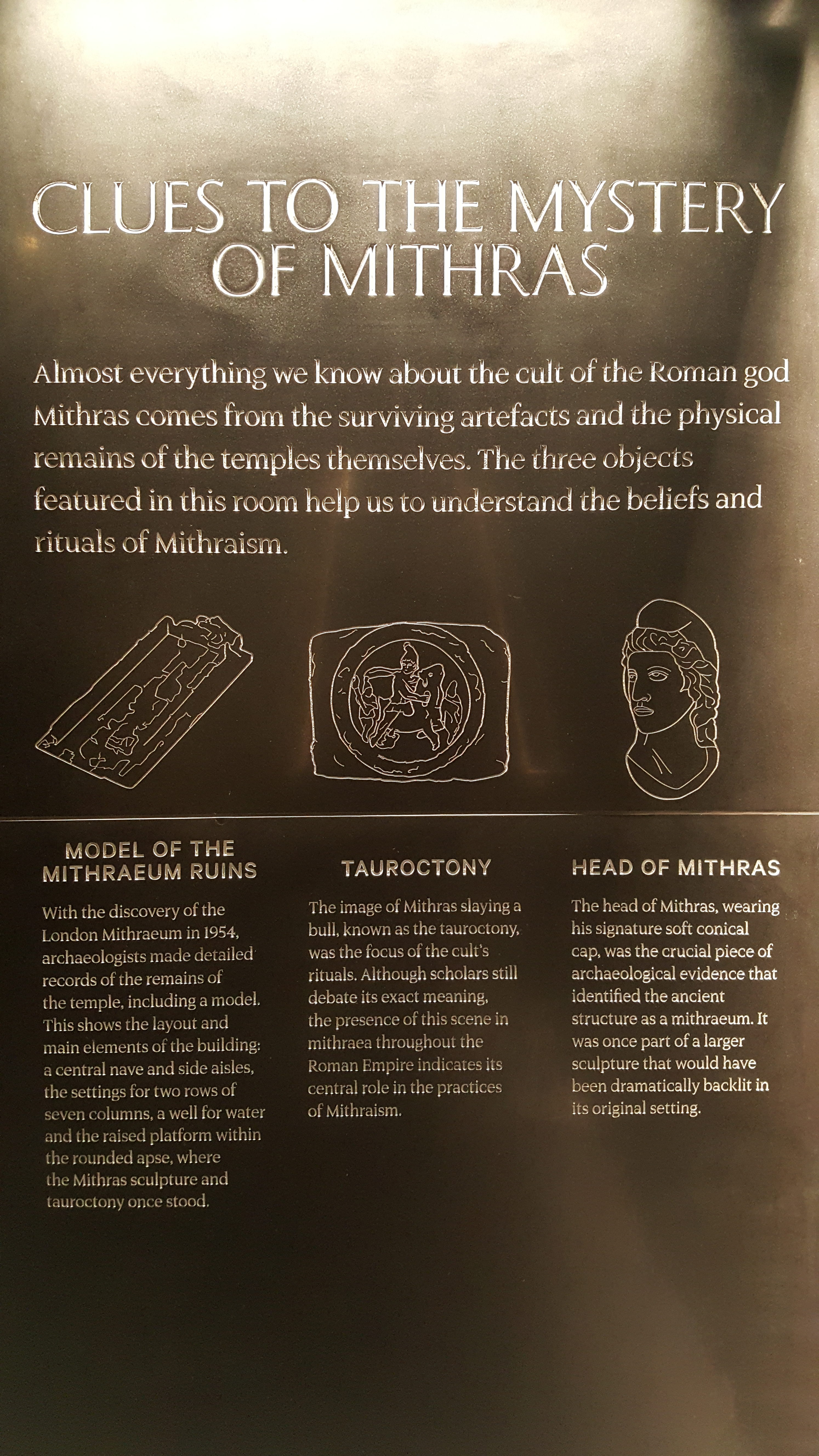
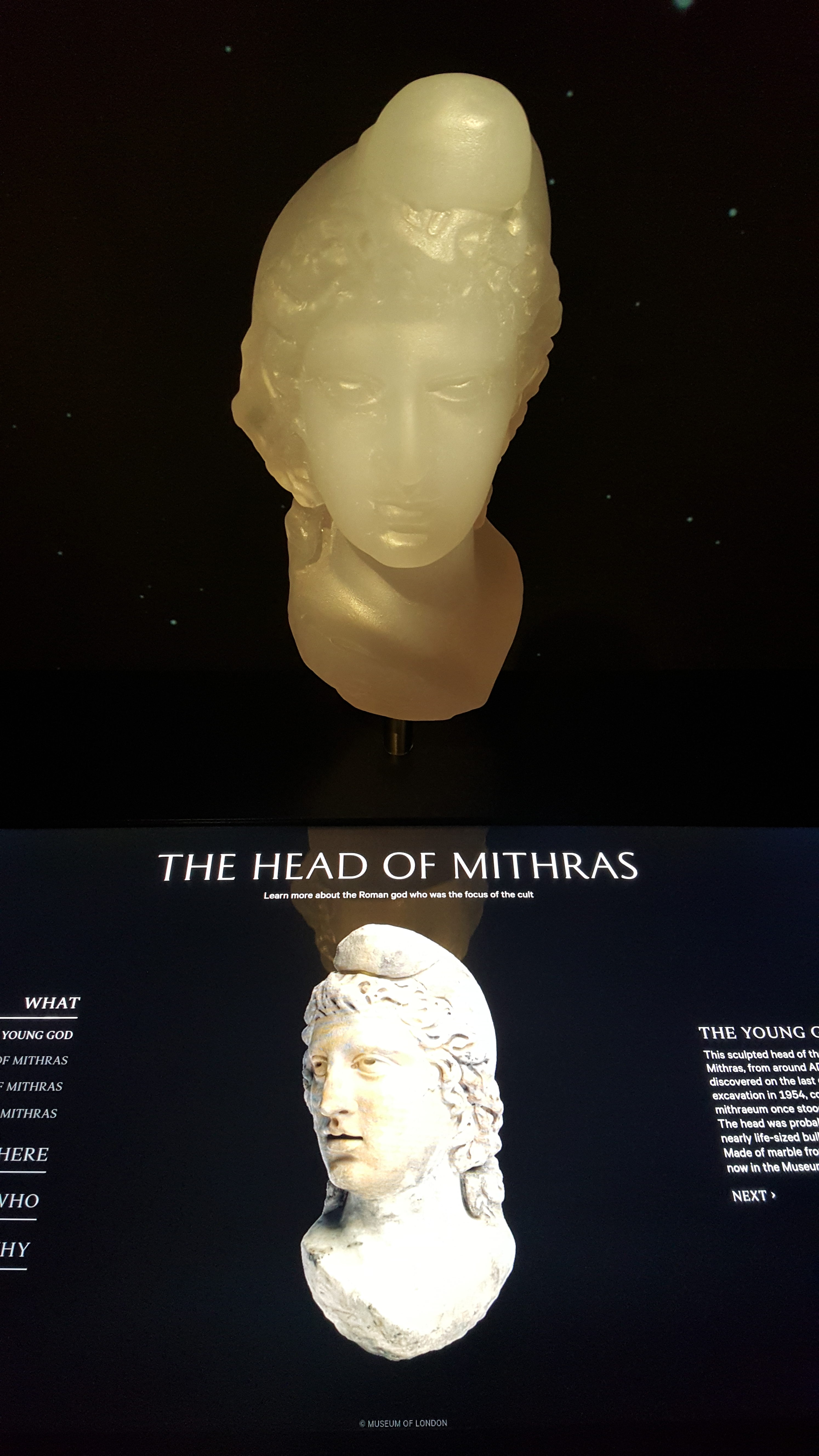
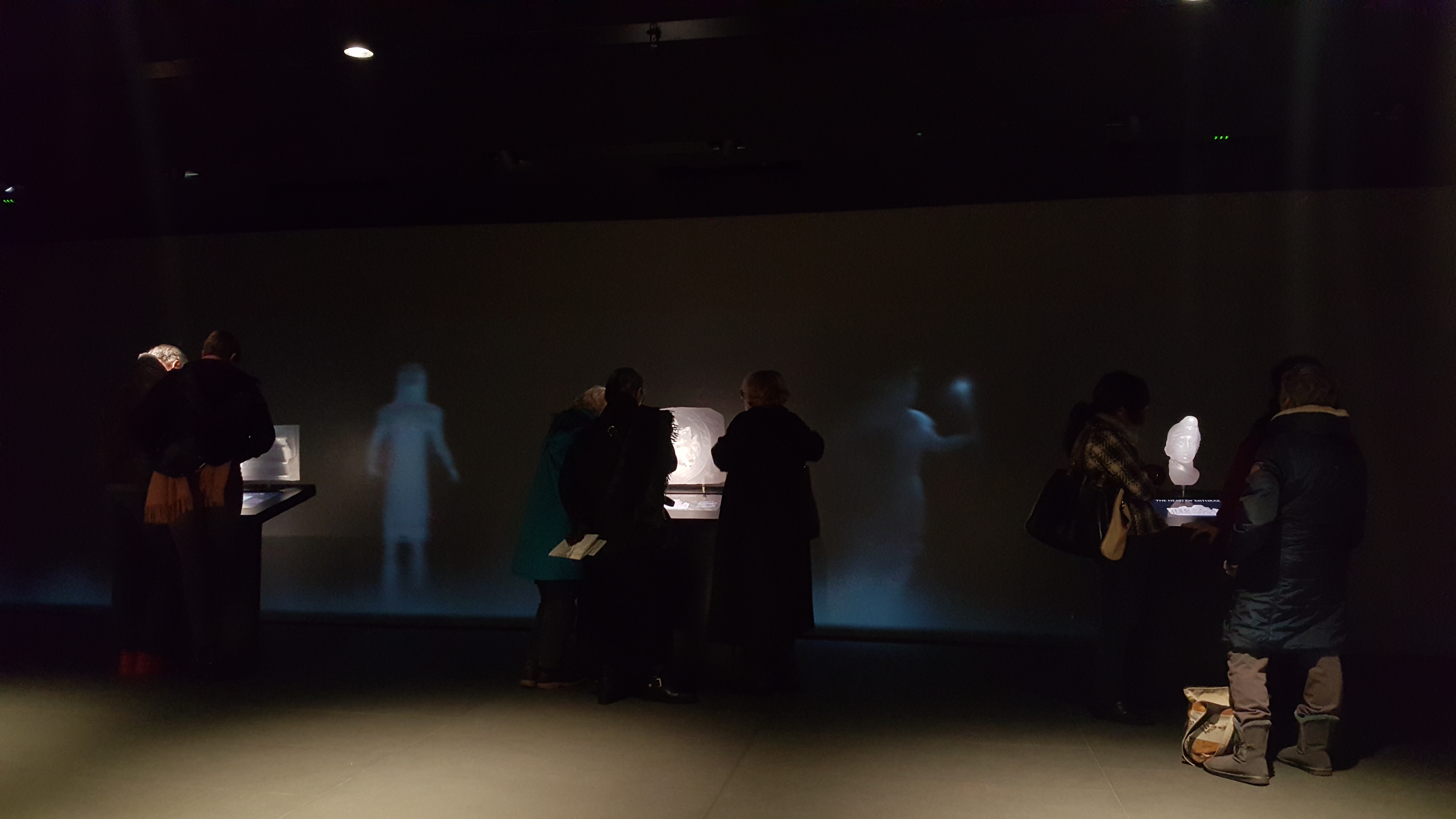
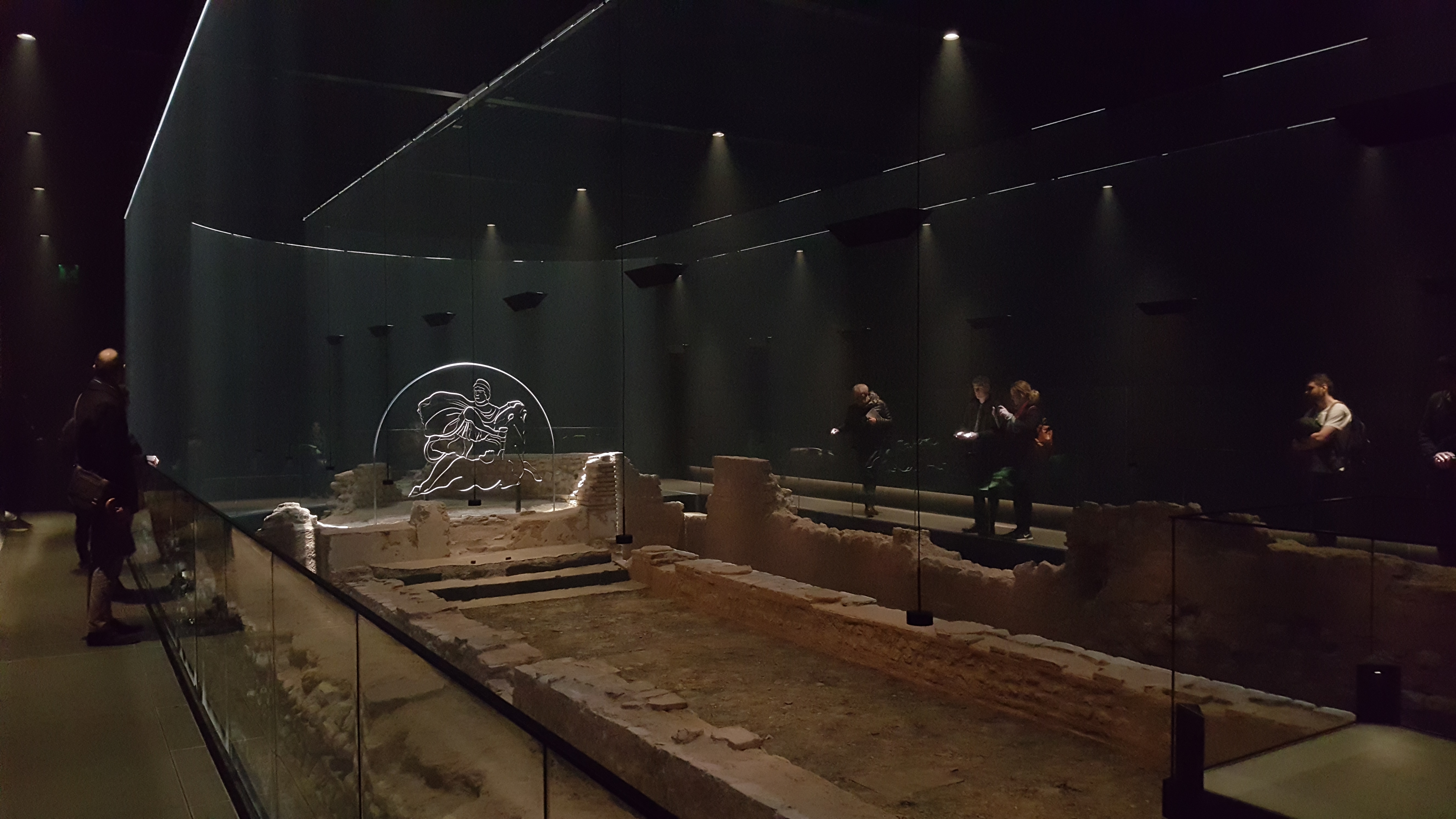
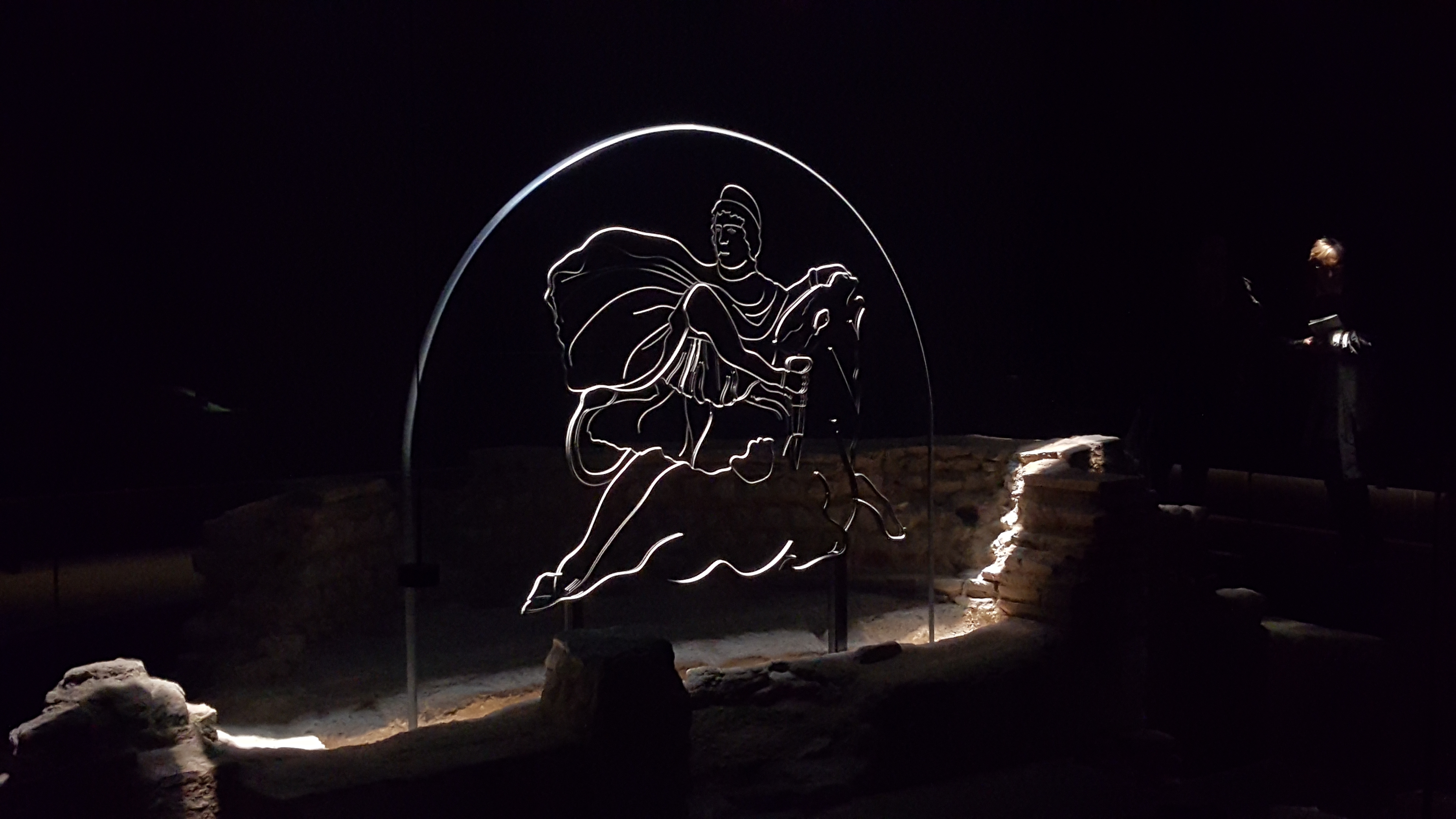
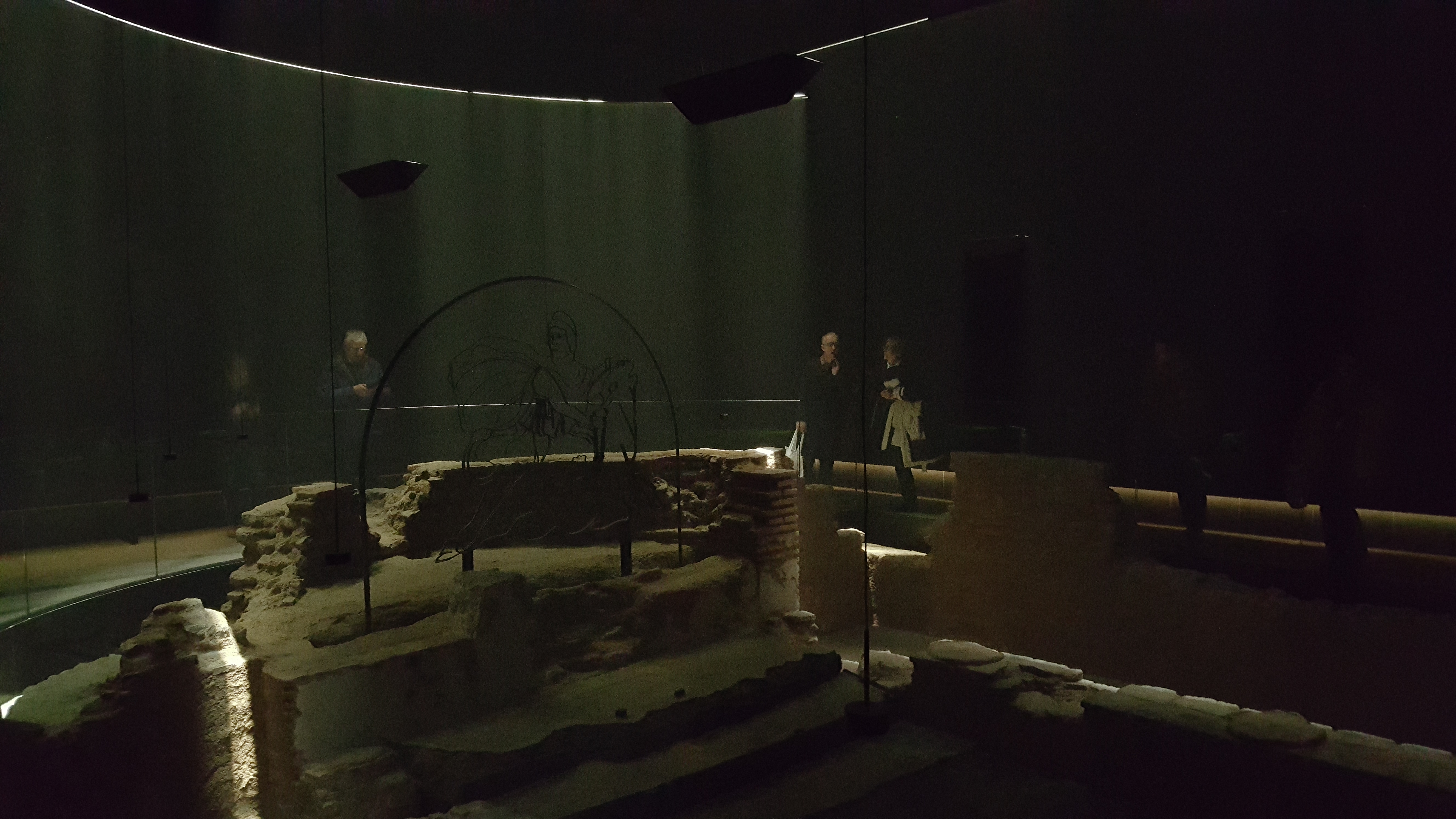
4 thoughts on “London Mithraeum”